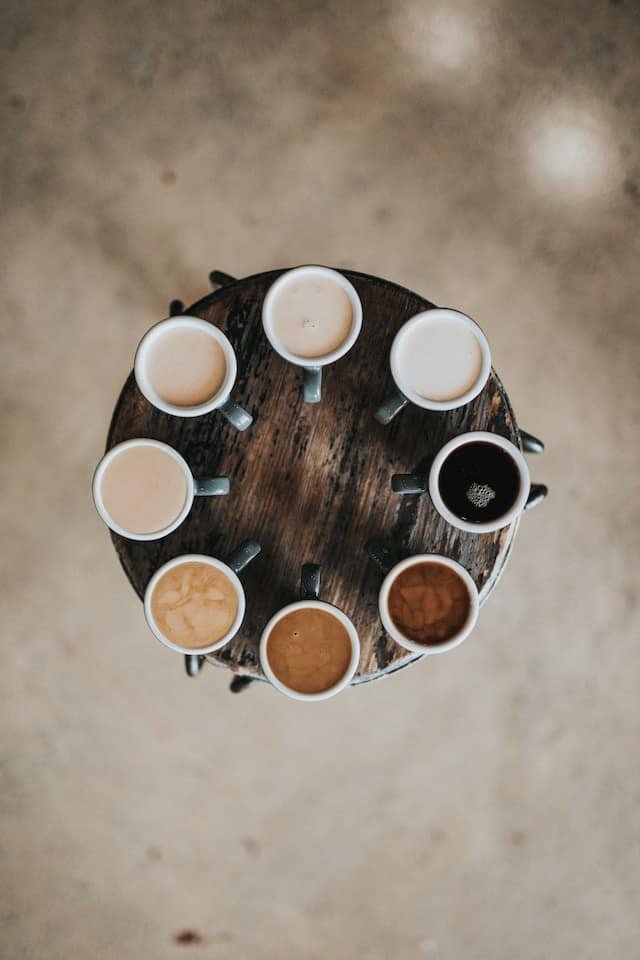
We are all capable of appreciating flavors and aromas, only, like many others, this is a learned skill. Some people have innate abilities, like true Da Vincis. But the rest of us mortals learn to paint and also to taste a good tea.
People who work in the wine industry are well aware that the palate is trained and that savoring complex notes such as those of some reds is not something innate, but something that is learned.
In fact, just as wine sommeliers have spent several years studying and are constantly learning, tea sommeliers also study in specialized institutes or take courses according to their particular interest.
But learning is also practicing and reading whatever material in this regard comes to your hands, or to your screen! In general, tea specialists have acquired their knowledge for centuries simply by trusting their senses, taking notes and following their instincts.
This is the method that Tea Sommeliers generally use when analyzing a cup to give their opinion.
Step 1: Look at the dry leaves
Before trying anything, it is best to check what the leaves look like, whether you are using tea bags or leaf tea. How are the leaves? Are they all broken or are most of them whole? Are there many tender shoots?
Step 2: The scent of dried leaves
Detecting any aroma in dry leaves is usually more difficult. Many people achieve this by placing the leaves in a gaiwan , which is a small porcelain cup with a lid where the tea leaves are placed with a little hot water. You move with a spoon and the heat will release the aromatic compounds of the tea. You will be able to feel them and take note of what you can describe.
Step 3: Prepare the tea
Prepare the tea as we indicate in this article and keep these details in mind so that you do not make mistakes and get a bad-tasting drink .
Take into account the temperature of the water and the time during which you must leave the bag or leaves immersed (the longer the more astringent your tea will be).
Take the opportunity to feel the aroma of wet leaves and take notes of this. It will help you later to choose your favorite flavors.
Step 4: Observe the drink
Surely you have seen a Sommelier working tasting a wine. Before taking a sip, they smell it and also look at it from different angles, tilting the glass and checking if it leaves any residue on the glass.
Specialist tea tasters analyse, for example, what the ready-made tea looks like, what color it is, whether it is clear or opaque. They also smell it and see if any other note other than the aromas you had already noted appeared.
They also tend to use a special container called a “cup of aromas” that is in the shape of a cylindrical glass where the tea is poured and covered with a cup. When uncovered, the aroma is much more concentrated and more subtle notes are perceived.
Step 5: Taste the tea
We reached the decisive moment and from which you will draw most of your conclusions. Although it may seem rude to you, tea is savored just like wine: sipping a little of the drink with your mouth, and without swallowing it, you make it pass through all areas of the tongue, palate and side of the mouth. Actually, the professional tasters then spit out the tea because they are tasting hundreds of samples, but you don’t have to do that… you might not get invited back for tea!
First focus on the mouthfeel. Is the tea a thin liquid or thick and syrupy? Are you noticing astringencies?
The aroma of the tea is quite complex and is why it has been consumed for centuries all over the world. You will feel aromas that will hit you immediately while others will only reveal themselves at the end.
Once you take the first sip, you can exhale so that the air bathes your tongue and you will feel those final notes of the tea, those that we commonly call “the taste that it leaves in my mouth”.
How does tea make you feel? Do you feel energized, amused by the spicy notes of a Chai Tea, satisfied with a black tea , relaxed with a herbal tea ? It sounds crazy, but really this is all about how you feel about the experience of tasting the tea.
Step 6: Draw your conclusions

You may be surprised, but in these steps there is no right answer and wrong answer. We all experience in different ways . Flavors that may seem fresh and exciting to some people may seem bland to others.
Have one of these informal tasting sessions with friends. Then compare the notes you took or the sensations you describe. It is fascinating to know what other people experience when drinking the same tea.
